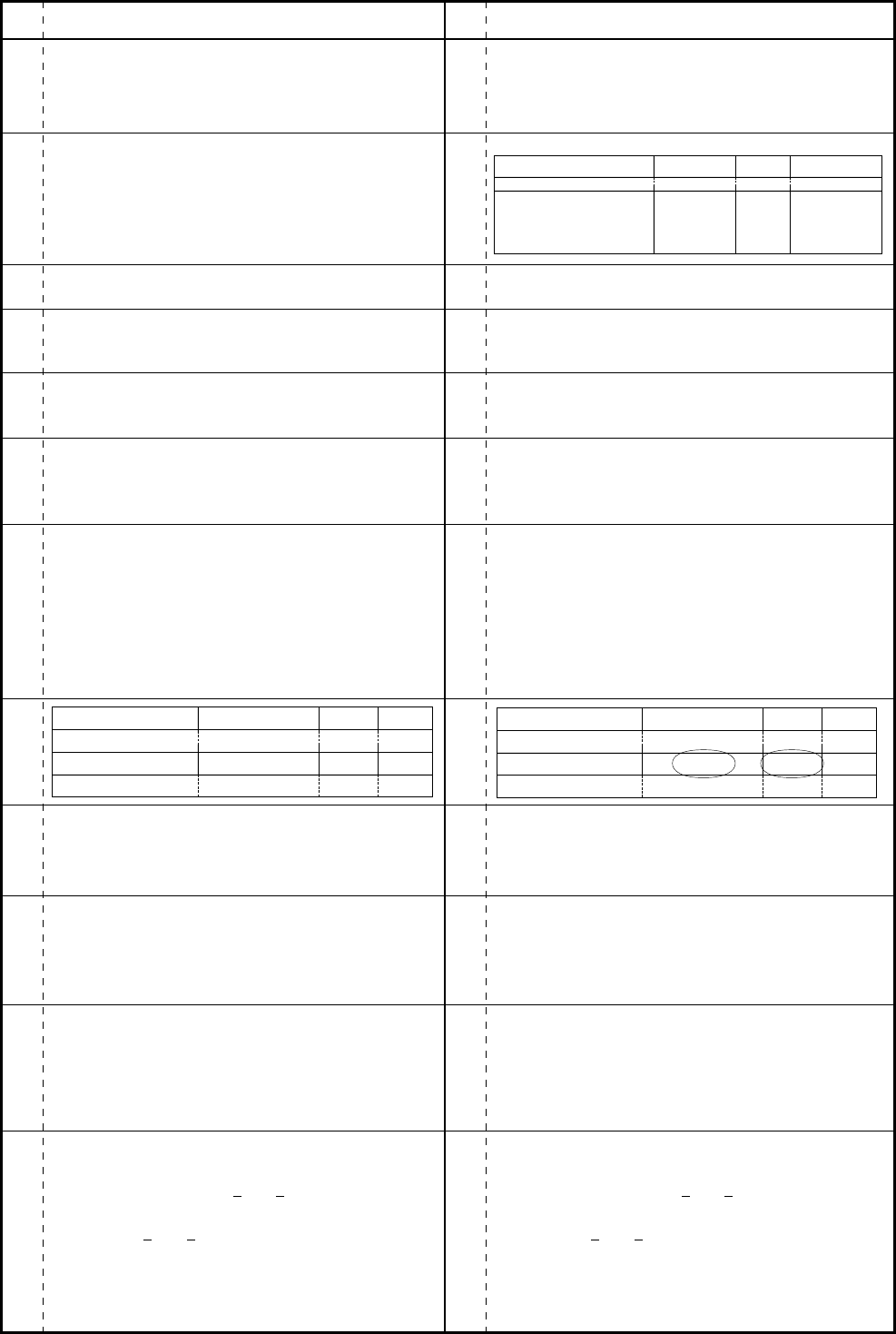
Errors
Page
Corrections
Page
- iii -
(Omit)
Note that operation is not assured when attempting to access
unmounted space.
Note that operation is not assured when attempting to access
unmounted space.
(The 2nd line of "■ Operation of various peripheral functions in
the low power consumption modes".)
In SLEEP mode, all peripheral functions operate except for the bus
controller.
(The 5th line of "■ Operation of various peripheral functions in
the low power consumption modes".)
In HALT mode, the interrupt controller accepts interrupt requests
from the watchdog timer and external pin interrupt requests, notifies
the CPU core, and then initiates recovery from HALT mode. In
STOP mode, the interrupt controller accepts external pin interrupt
requests, notifies the CPU core, and then initiates recovery from STOP
mode.
(In "6.1 Overview")
... , the CG also supplies clock pulses with the same frequency as the
oscillating frequency of the oscillator to external devices.
(
In the description of "■ Flexible clock control".
)
- Supports self-excitation/external excitation
(input frequency: 8 to 30 MHz)
(In fig. 6-3-1.)
When using PLL:
8MHz to 15MHz
When not using PLL:
8MHz to 30MHz
(From 1st line to 4th line of "6.4.1 Input Frequency Setting".)
When CKSEL is set “H”, use an oscillator or resonator with an input
frequency fosci such that 8MHz ≤ fosci ≤ 15MHz. When CKSEL is
set “L”, use an oscillator or resonator with an input frequency fosci
such that 8MHz ≤ fosci ≤ 30MHz.
Use of an oscillator or resonator that generates a frequency lower
than 8MHz, or higher than 30 MHz is prohibited.
(
Following sentence is added to [Programming Cautions] of SWAPH.
)
The operations of "udf09 imm8, Dn", "udf09 imm16, Dn" and "udf09
imm32, Dn" are not assured. In addition, a system error interrupt does
not occur in these cases.
(One note is added in the table 3-2-1.)
(As
the programming note, a new item (e) is added. For details on this
item, refer to this LSI User's Manual.)
Note that it is prohibited to access unmounted space of the internal
data space, the internal I/O space and the internal instruction space.
When accessing the unmounted space, the operation is not assured.
Note that it is prohibited to access unmounted space of the internal
data space and the internal I/O space. When accessing the unmounted
space, the operation is not assured.
(The 2nd line of "■ Operation of various peripheral functions in the
low power consumption modes".)
In SLEEP mode, all peripheral functions operate except for the bus
controller and the watchdog timer.
(The 5th line of "■ Operation of various peripheral functions in the
low power consumption modes".)
In HALT/STOP mode, the interrupt controller accepts the external
pin interrupt requests, notifies the CPU core, and then initiates recovery
from HALT/STOP mode.
When making a transition to HALT/SLEEP mode, stop the watchdog timer
by clearing the WDCNE bit to "0" in watchdog timer control register WDCTR.
(In "6.1 Overview")
..., the CG also supplies clock pulses with the same frequency as the
oscillating frequency of the oscillator, or that frequency divided by 2,
to external devices.
(
In the description of "■ Flexible clock control".
)
- Supports self-excitation/external excitation
(input frequency: 8 MHz to 20 MHz)
Note: The in-circuit emulator (ICE) cannot operate with self-excited
oscillators in the microcontroller.
(In fig. 6-3-1.)
When using PLL:
8 MHz to 18 MHz
When not using PLL:
8 MHz to 20 MHz
(From 1st line to 4th line of "6.4.1 Input Frequency Setting".)
When CKSEL is set “H”, use an oscillator or resonator with an input
frequency fosci such that 8 MHz ≤ fosci ≤ 18 MHz. When CKSEL is
set “L”, use an oscillator or resonator with an input frequency fosci
such that 8 MHz ≤ fosci ≤ 20 MHz.
Use of an oscillator or resonator that generates a frequency lower than
8 MHz, or higher than 20 MHz is prohibited.
P.3-30
P.3-31
P.3-36
to P.3-39
P.4-4
P.4-5
P.5-4
P.5-4
P.5-4
P.6-2
P.6-2
P.6-2
P.6-3
P.3-30
P.3-31
-
P.4-4
P.4-5
P.5-4
P.5-4
P.5-4
P.6-2
P.6-2
P.6-2
P.6-3
Preceding instruction
Placement
relationship
Notes
Following instruction
(◆ For details, refer to note (e)
on page 3-36.)
Multiply-and-
accumulate
instruction *3
High -speed
multiplication
instruction *5
-
Insert at least
two NOP instructions
immediately before
the instructions
::::
HALT STOPSLEEP
Watchdog timer
Operates Operates Stopped
...
...
...
...
...
...
...
...
HALT STOPSLEEP
Watchdog timer
Stopped Stopped Stopped
...
...
...
...
...
...
...
...


















